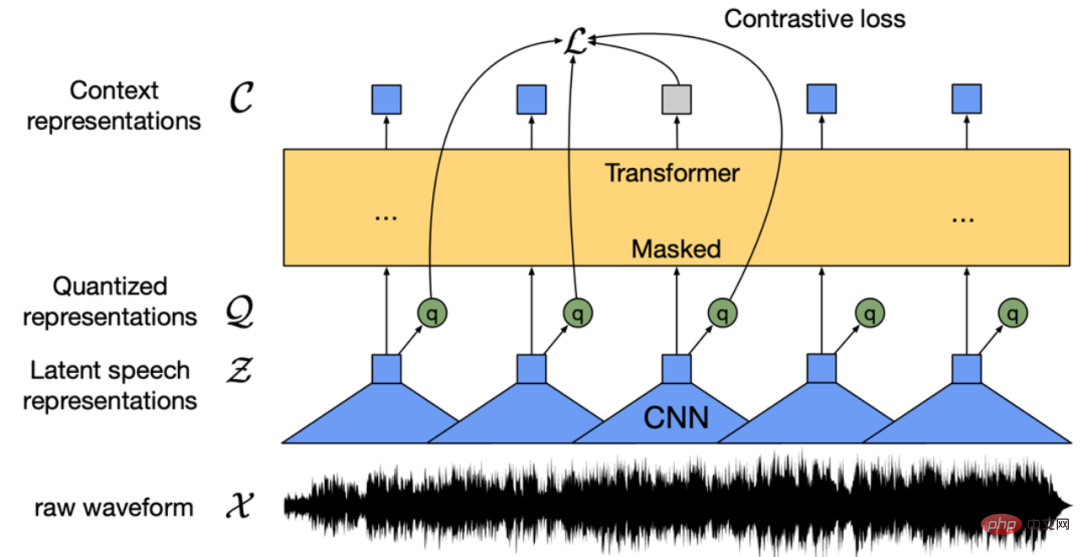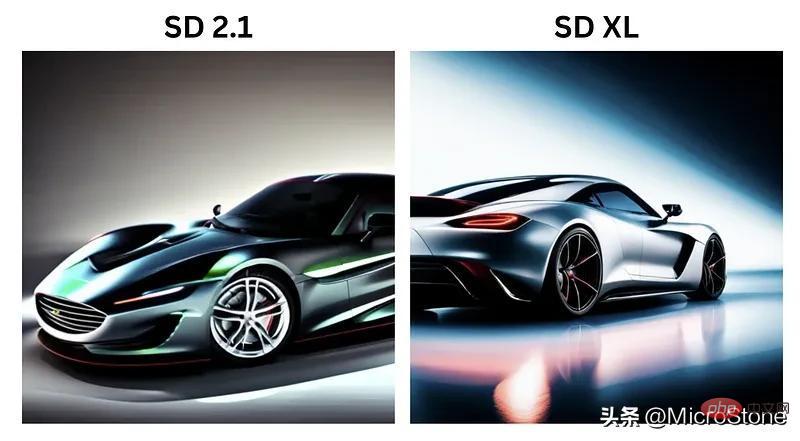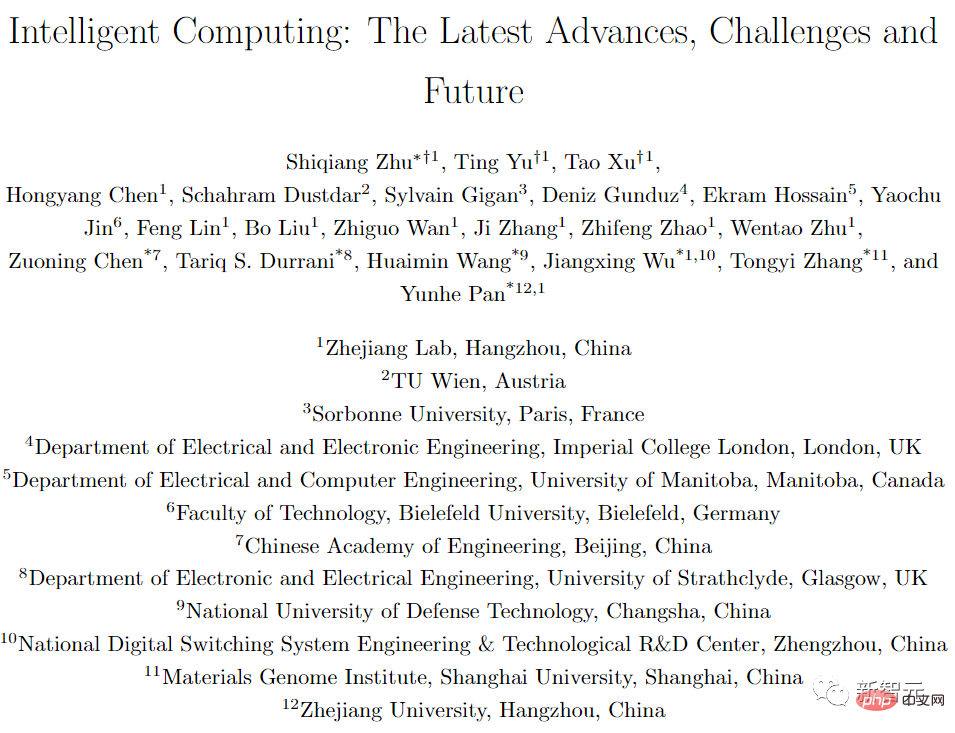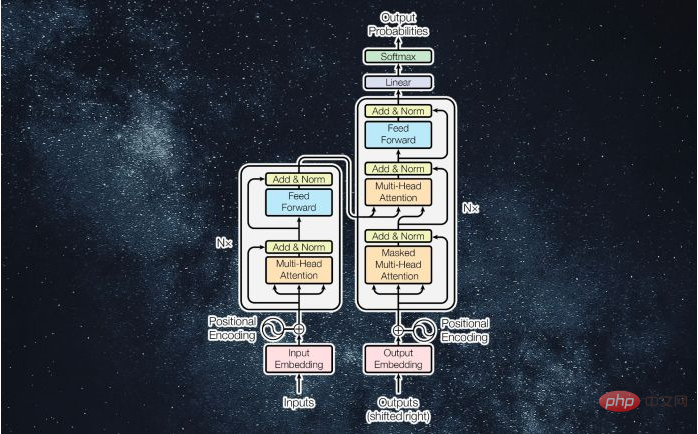 Technology peripherals
Technology peripherals AI
AI The latest introduction to 'Multimodal LLM'! Data and proceedings are packaged and taken away directly
The latest introduction to 'Multimodal LLM'! Data and proceedings are packaged and taken away directly
Progress tracking link (Awesome-MLLM, real-time updates): https://github.com/BradyFU/Awesome-Multimodal-Large-Language-Models
In recent years, research on Large Language Models (LLM) has made significant progress (such as GPT- 3, LLaMa, ChatGPT, GPT-4), these models have demonstrated excellent performance on various natural language processing (NLP) tasks.
Through pre-training on massive data, LLM has gained rich knowledge and powerful reasoning capabilities. Just need to input some user instructions, and these models can parse the instructions, perform reasoning and give answers that meet the user's expectations.
#Some typical capabilities LLM has include:
- · Execute new tasks not seen during training;
- · Complete new tasks with a few examples;
- · Perform complex reasoning tasks through reasoning chains;
- · Coordinate various models and tools to complete complex tasks .
There are many key ideas and technologies behind these capabilities, including Instruction Tuning, In-Context Learning ) and Chain of Thought, etc.
Multimodal large-scale language model
Although large language models have made great progress in the field of NLP, there are fewer corresponding models and technologies in the multimodal field. Exploration, and traditional visual-language models still have limitations such as insufficient generalization and lack of reasoning capabilities.
To this end, many scholars have recently turned their attention to an emerging direction: Multimodal Large Language Models (MLLM).
The main idea is to use LLM as the "brain" to integrate, reason, analyze and make decisions on the input multi-modal information, thereby completing the tasks delivered by humans.

From the perspective of developing general artificial intelligence, compared with LLM, MLLM has taken another step forward and has the following advantages:
· More in line with human’s habit of understanding the world. Humans have multiple senses and receive information from multiple modalities, which are often complementary and synergistic. Therefore, the use of multimodal information generally enables better recognition and completion of complex tasks;
· More powerful and user-friendly (User-Friendly) interface. By supporting multi-modal input, users can convey information in a more flexible way;
· Wider task support. LLM can usually only complete NLP related tasks, while MLLM can complete more tasks by accessing multi-modality.
From a system design perspective, MLLM can be divided into two categories:
· LLM serves as a reasoner and supports multi-modality Cognitive reasoning system for input;
· LLM as a multi-tool collaboration system for planner/scheduler/decision maker.
The former generally converts multi-modal information into a form that LLM can directly receive and process through a trainable multi-modal conversion interface. , enabling LLM to perform cognition and reasoning based on these multi-modal information and user instructions.
The latter usually uses LLM as a planner/scheduler/decision maker [1] to decompose complex tasks delivered by users into simpler sub-tasks, dispatch them to appropriate models/tools, and finally integrate the results and output.
We adopted another perspective, focusing on the key technologies and implementation methods behind MLLM, conducted research and summary on related work, and divided MLLM into the following categories:
·Multimodal Instruction Tuning
·Multimodal Instruction Tuning Multimodal In-Context Learning
·Multimodal Chain-of-Thought
·LLM-Aided Visual Reasoning
Below we will give a brief introduction to these types of work.
Multimodal Instruction Tuning
The basic method of multimodal instruction fine-tuning is to use a unified template to unify all types of data and The form of instructions describes task requirements, forming multi-modal instruction data, and then uses this data to fine-tune MLLM.
Due to the consistency of the instruction form during training and testing, LLM can generalize to other tasks more flexibly and obtain powerful zero samples by virtue of its powerful semantic understanding and reasoning capabilities. learning ability.
The basic form of multimodal instruction data can be summarized as (instruction, multimodal input, answer) triplet.
An intuitive way to obtain this kind of data is to transform the benchmark data set. We take image description (Image Captioning) as an example, as shown in Figure 1 below:

Figure 1. Example of multi-modal command data
Original Caption data The sample includes a picture and a text description (Ground Truth). This data-GT paired data naturally constitutes the multi-modal input and answer parts of the instruction data.
The instruction part is the description of the corresponding task, which is generally written manually or generated by calling GPT.
When fine-tuning multi-modal instructions, MLLM converts multi-modal inputs and sends them to LLM. LLM predicts answers based on multi-modal information and instruction text.
Multimodal In-Context Learning
The core idea of multimodal context learning is to learn from analogies. For example, the forms we generally come into contact with when studying are as follows:

# By studying examples, when we encounter new problems, we can use them through categories Learn basic ideas and methods of proportion problems to solve new problems.
In addition, the example questions can also standardize our answer format, which is more conducive to getting correct answers that meet the expected requirements.
As shown in Figure 2 below, let the model predict the calculation result of 3x7 through an example.

Figure 2. Example of multi-modal context data, using the example to let the model predict the calculation results of 3x7
Multimodal Chain-of-Thought
The thinking chain is a series of intermediate reasoning steps [2]. The basic idea of the multi-modal thinking chain is to make the model learn to output intermediate steps step by step, and finally deduce the final answer, as shown in Figure 3 below:

##Figure 3. Example of multi-modal thinking chain data
Compared to directly outputting answers, thinking chain:
· More in line with human reasoning habits: based on previous reasoning steps and results, it gradually leads to the final answer;
· Suitable for complex reasoning tasks, solving complex problems step by step, improving Accuracy of answers.
LLM-Aided Visual ReasoningUse LLM as a decision-making and reasoning mechanism, call various multi-modal models and tools and integrate the output , get the final answer. According to the way to complete the task, it can generally be divided into single-wheel model and multi-wheel model.
The basic idea of the single-round model is that LLM acts as a planner, scheduler and decision maker to coordinate various models/tools to complete tasks. It generally needs to complete the following functions[1]:
·Planner: Decompose complex tasks into solvable subtasks;
# #· Scheduler: Dispatches subtasks to appropriate models/tools;
· Decision maker: Manage the order of execution of subtasks and integrate the results of subtasks to get the final answer.
The multi-round model is based on the idea of iteration and continuously accumulates visual cognition until it is confident enough to obtain the final answer. In this process, LLM needs to integrate the previous steps (the questions raised and the visual cognitive information obtained) to determine whether the final answer can be output [3].For related papers, please see: https://github.com/BradyFU/Awesome-Multimodal-Large-Language-Models








The above is the detailed content of The latest introduction to 'Multimodal LLM'! Data and proceedings are packaged and taken away directly. For more information, please follow other related articles on the PHP Chinese website!
 从VAE到扩散模型:一文解读以文生图新范式Apr 08, 2023 pm 08:41 PM
从VAE到扩散模型:一文解读以文生图新范式Apr 08, 2023 pm 08:41 PM1 前言在发布DALL·E的15个月后,OpenAI在今年春天带了续作DALL·E 2,以其更加惊艳的效果和丰富的可玩性迅速占领了各大AI社区的头条。近年来,随着生成对抗网络(GAN)、变分自编码器(VAE)、扩散模型(Diffusion models)的出现,深度学习已向世人展现其强大的图像生成能力;加上GPT-3、BERT等NLP模型的成功,人类正逐步打破文本和图像的信息界限。在DALL·E 2中,只需输入简单的文本(prompt),它就可以生成多张1024*1024的高清图像。这些图像甚至
 找不到中文语音预训练模型?中文版 Wav2vec 2.0和HuBERT来了Apr 08, 2023 pm 06:21 PM
找不到中文语音预训练模型?中文版 Wav2vec 2.0和HuBERT来了Apr 08, 2023 pm 06:21 PMWav2vec 2.0 [1],HuBERT [2] 和 WavLM [3] 等语音预训练模型,通过在多达上万小时的无标注语音数据(如 Libri-light )上的自监督学习,显著提升了自动语音识别(Automatic Speech Recognition, ASR),语音合成(Text-to-speech, TTS)和语音转换(Voice Conversation,VC)等语音下游任务的性能。然而这些模型都没有公开的中文版本,不便于应用在中文语音研究场景。 WenetSpeech [4] 是
 普林斯顿陈丹琦:如何让「大模型」变小Apr 08, 2023 pm 04:01 PM
普林斯顿陈丹琦:如何让「大模型」变小Apr 08, 2023 pm 04:01 PM“Making large models smaller”这是很多语言模型研究人员的学术追求,针对大模型昂贵的环境和训练成本,陈丹琦在智源大会青源学术年会上做了题为“Making large models smaller”的特邀报告。报告中重点提及了基于记忆增强的TRIME算法和基于粗细粒度联合剪枝和逐层蒸馏的CofiPruning算法。前者能够在不改变模型结构的基础上兼顾语言模型困惑度和检索速度方面的优势;而后者可以在保证下游任务准确度的同时实现更快的处理速度,具有更小的模型结构。陈丹琦 普
 解锁CNN和Transformer正确结合方法,字节跳动提出有效的下一代视觉TransformerApr 09, 2023 pm 02:01 PM
解锁CNN和Transformer正确结合方法,字节跳动提出有效的下一代视觉TransformerApr 09, 2023 pm 02:01 PM由于复杂的注意力机制和模型设计,大多数现有的视觉 Transformer(ViT)在现实的工业部署场景中不能像卷积神经网络(CNN)那样高效地执行。这就带来了一个问题:视觉神经网络能否像 CNN 一样快速推断并像 ViT 一样强大?近期一些工作试图设计 CNN-Transformer 混合架构来解决这个问题,但这些工作的整体性能远不能令人满意。基于此,来自字节跳动的研究者提出了一种能在现实工业场景中有效部署的下一代视觉 Transformer——Next-ViT。从延迟 / 准确性权衡的角度看,
 Stable Diffusion XL 现已推出—有什么新功能,你知道吗?Apr 07, 2023 pm 11:21 PM
Stable Diffusion XL 现已推出—有什么新功能,你知道吗?Apr 07, 2023 pm 11:21 PM3月27号,Stability AI的创始人兼首席执行官Emad Mostaque在一条推文中宣布,Stable Diffusion XL 现已可用于公开测试。以下是一些事项:“XL”不是这个新的AI模型的官方名称。一旦发布稳定性AI公司的官方公告,名称将会更改。与先前版本相比,图像质量有所提高与先前版本相比,图像生成速度大大加快。示例图像让我们看看新旧AI模型在结果上的差异。Prompt: Luxury sports car with aerodynamic curves, shot in a
 五年后AI所需算力超100万倍!十二家机构联合发表88页长文:「智能计算」是解药Apr 09, 2023 pm 07:01 PM
五年后AI所需算力超100万倍!十二家机构联合发表88页长文:「智能计算」是解药Apr 09, 2023 pm 07:01 PM人工智能就是一个「拼财力」的行业,如果没有高性能计算设备,别说开发基础模型,就连微调模型都做不到。但如果只靠拼硬件,单靠当前计算性能的发展速度,迟早有一天无法满足日益膨胀的需求,所以还需要配套的软件来协调统筹计算能力,这时候就需要用到「智能计算」技术。最近,来自之江实验室、中国工程院、国防科技大学、浙江大学等多达十二个国内外研究机构共同发表了一篇论文,首次对智能计算领域进行了全面的调研,涵盖了理论基础、智能与计算的技术融合、重要应用、挑战和未来前景。论文链接:https://spj.scien
 什么是Transformer机器学习模型?Apr 08, 2023 pm 06:31 PM
什么是Transformer机器学习模型?Apr 08, 2023 pm 06:31 PM译者 | 李睿审校 | 孙淑娟近年来, Transformer 机器学习模型已经成为深度学习和深度神经网络技术进步的主要亮点之一。它主要用于自然语言处理中的高级应用。谷歌正在使用它来增强其搜索引擎结果。OpenAI 使用 Transformer 创建了著名的 GPT-2和 GPT-3模型。自从2017年首次亮相以来,Transformer 架构不断发展并扩展到多种不同的变体,从语言任务扩展到其他领域。它们已被用于时间序列预测。它们是 DeepMind 的蛋白质结构预测模型 AlphaFold
 AI模型告诉你,为啥巴西最可能在今年夺冠!曾精准预测前两届冠军Apr 09, 2023 pm 01:51 PM
AI模型告诉你,为啥巴西最可能在今年夺冠!曾精准预测前两届冠军Apr 09, 2023 pm 01:51 PM说起2010年南非世界杯的最大网红,一定非「章鱼保罗」莫属!这只位于德国海洋生物中心的神奇章鱼,不仅成功预测了德国队全部七场比赛的结果,还顺利地选出了最终的总冠军西班牙队。不幸的是,保罗已经永远地离开了我们,但它的「遗产」却在人们预测足球比赛结果的尝试中持续存在。在艾伦图灵研究所(The Alan Turing Institute),随着2022年卡塔尔世界杯的持续进行,三位研究员Nick Barlow、Jack Roberts和Ryan Chan决定用一种AI算法预测今年的冠军归属。预测模型图


Hot AI Tools

Undresser.AI Undress
AI-powered app for creating realistic nude photos

AI Clothes Remover
Online AI tool for removing clothes from photos.

Undress AI Tool
Undress images for free

Clothoff.io
AI clothes remover

AI Hentai Generator
Generate AI Hentai for free.

Hot Article

Hot Tools

SublimeText3 English version
Recommended: Win version, supports code prompts!

mPDF
mPDF is a PHP library that can generate PDF files from UTF-8 encoded HTML. The original author, Ian Back, wrote mPDF to output PDF files "on the fly" from his website and handle different languages. It is slower than original scripts like HTML2FPDF and produces larger files when using Unicode fonts, but supports CSS styles etc. and has a lot of enhancements. Supports almost all languages, including RTL (Arabic and Hebrew) and CJK (Chinese, Japanese and Korean). Supports nested block-level elements (such as P, DIV),

Zend Studio 13.0.1
Powerful PHP integrated development environment

Atom editor mac version download
The most popular open source editor

MinGW - Minimalist GNU for Windows
This project is in the process of being migrated to osdn.net/projects/mingw, you can continue to follow us there. MinGW: A native Windows port of the GNU Compiler Collection (GCC), freely distributable import libraries and header files for building native Windows applications; includes extensions to the MSVC runtime to support C99 functionality. All MinGW software can run on 64-bit Windows platforms.






